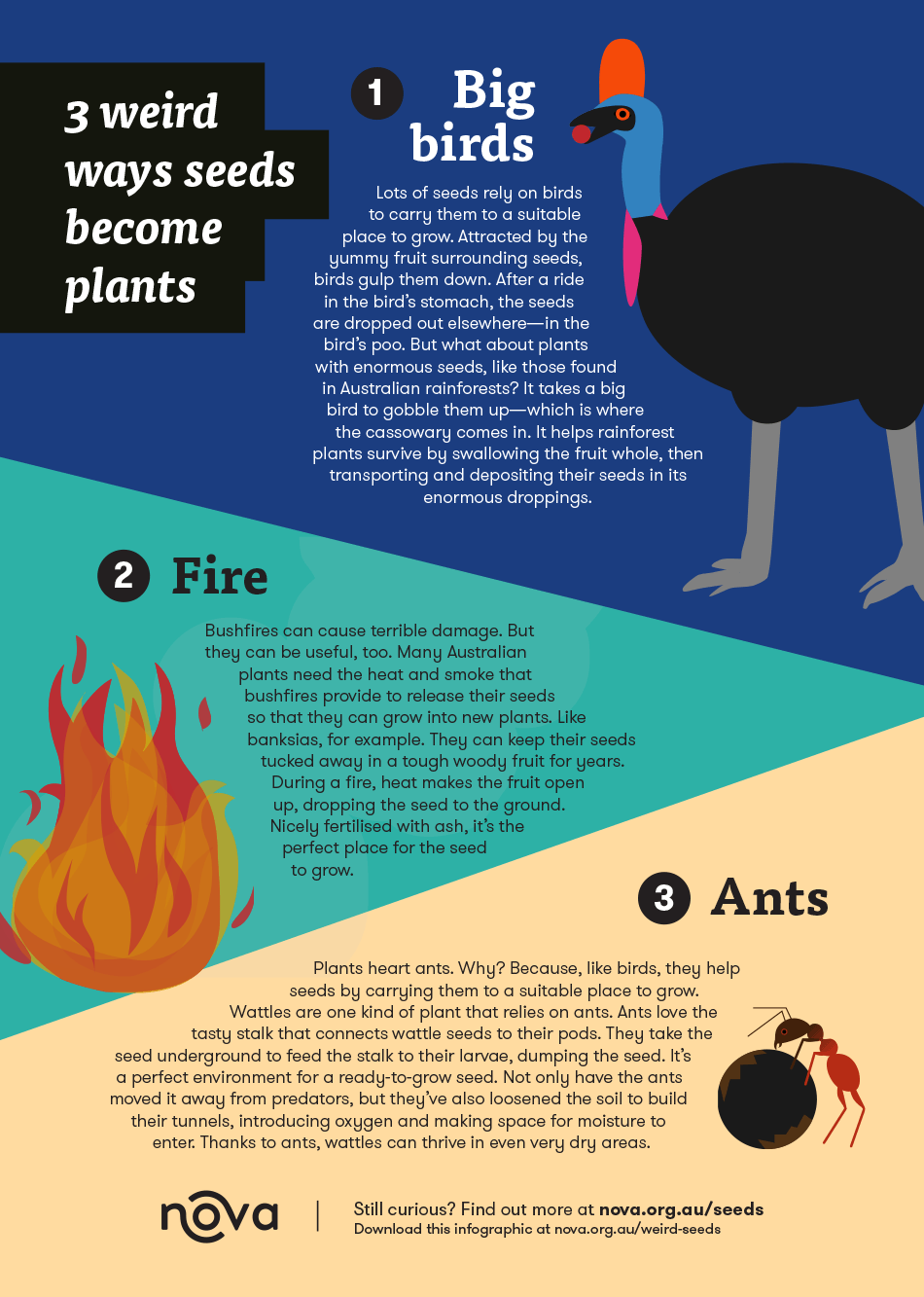- Home
- Infographics
- Weird ways seeds become plants
Weird ways seeds become plants
Some seeds have very peculiar requirements for germinating into plants. Here are three weird ways that seeds become plants.
Big birds
Lots of seeds rely on birds to carry them to a suitable place to grow. Attracted by the yummy fruit surrounding seeds, birds gulp them down. After a ride in the bird’s stomach, the seeds are dropped out elsewhere—in the bird’s poo. But what about plants with enormous seeds, like those found in Australian rainforests? It takes a big bird to gobble them up—which is where the cassowary comes in. It helps rainforest plants survive by swallowing the fruit whole, then transporting and depositing their seeds in its enormous droppings.
Fire
Bushfires can cause terrible damage. But they can be useful, too. Many Australian plants need the heat and smoke that bushfires provide to release their seeds so that they can grow into new plants. Like banksias, for example. They can keep their seeds tucked away in a tough woody fruit for years. During a fire, heat makes the fruit open up, dropping the seed to the ground. Nicely fertilised with ash, it’s the perfect place for the seed to grow.
Ants
Plants heart ants. Why? Because, like birds, they help seeds by carrying them to a suitable place to grow. Wattles are one kind of plant that relies on ants. Ants love the tasty stalk that connects wattle seeds to their pods. They take the seed underground to feed the stalk to their larvae, dumping the seed. It’s a perfect environment for a ready-to-grow seed. Not only have the ants moved it away from predators, but they’ve also loosened the soil to build their tunnels, introducing oxygen and making space for moisture to enter. Thanks to ants, wattles can thrive in even very dry areas.
Further information
Still curious? Find out more about seed germination.






